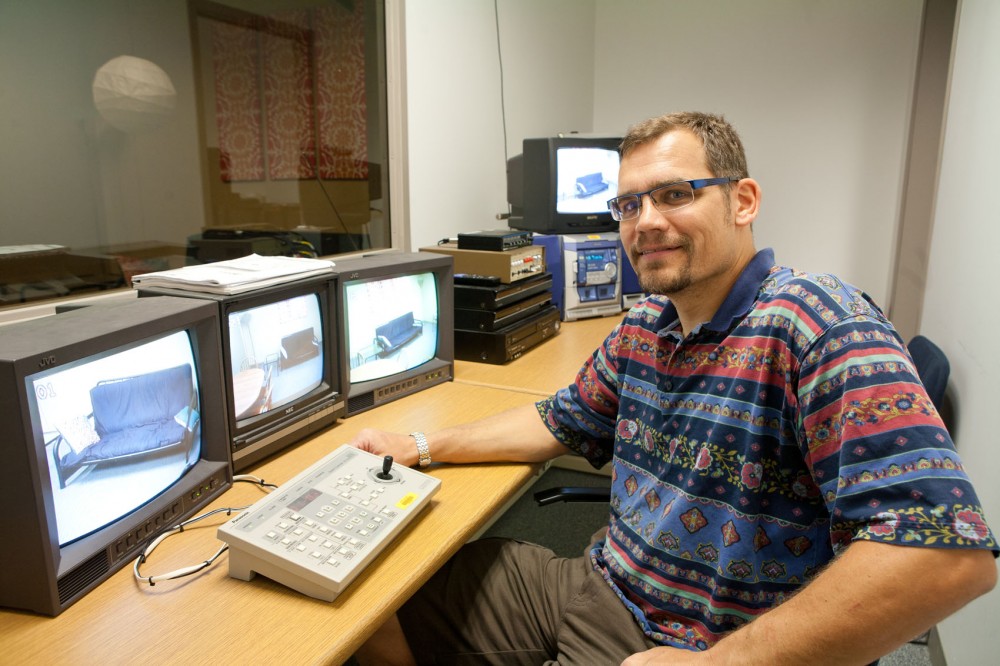Think of a “professor,” and the image that comes to mind is likely an imposing figure at a blackboard. Though professors may be thought of mainly as teachers, research must also rank highly on their priority list if they want tenure.
Achieving indefinite tenure is the end goal of a faculty member at the University of Minnesota, as it assures them the chance to teach and research freely until retirement.
To be granted tenure, a vast majority of faculty from the College of Liberal Arts undergo the tenure process by performing research in addition to teaching courses.
In general, tenure-track faculty members are expected to research about as much as they teach, said Elizabeth Boyle, sociology professor and the department’s chair-elect.
“Research is a very important part of what I do,” said Communication Studies associate professor Ascan Koerner. “It’s at least as important as teaching.”
When first hired as tenure-track faculty, CLA faculty members are believed to have the potential to develop their research agenda within a particular discipline, said Michal Kobialka, professor and CLA associate dean for faculty.
English professor Nabil Matar said research is part of his vocation.
“We teach, and we research. If we don’t do both, we shouldn’t be in our job.”
And if they don’t do both, they could be out of a job.
Tenure candidates are either granted a position or terminated after their sixth year at the University.
Beginning as probationary faculty, candidates are evaluated annually by the tenured faculty of their department, according to the Board of Regents policy on faculty tenure.
Depending on the quality of their research, teaching and service, candidates can be promoted to the rank of tenured associate professor in their sixth year.
The department, the college, Provost Karen Hanson and finally the Board of Regents evaluate the portfolio of each faculty member, Kobialka said.
Nearly all tenure-track applicants for 2011 – 2012 were granted promotion.
Of the 80 probationary faculty applicants, 78 were promoted to associate professor with one case still pending, according to a Board of Regents Faculty, Staff and Student Affairs Committee meeting.
Once tenure is granted, faculty members are expected to continue developing their academic record to be promoted to professor later.
Each member prepares a document annually describing their activities used to determine faculty salary merit increases.
“The expectation is that the faculty member is committed to developing his or her pedagogical faculties,” Kobialka said, “while at the same time developing by composing scholarly journals, attending conferences, giving lectures, or creating art.”
Matar’s latest research project — compiling an edited and introduced version of a 17th century manuscript — took four years to complete. He worked on the project during the summer and over breaks when he was not teaching.
Matar said fitting research and teaching together is intensive but is worth the stress.
“I feel that one is always helping me in the other and in a sense enriching both,” he said. “When you are doing research, you are thinking whether something could be useful in class or if it’s something you could use in a lecture that you’re preparing later.”
Koerner will present a paper in July on his most recent study, which explored the communication within families who have used reproductive technology to conceive children.
A faculty member on the tenure track is expected to be “actively engaged in a research activity that’s appropriate for your discipline,” said Alex Rothman, CLA associate dean for research and graduate programs.
Each department has its own statement on tenure as mandated by regents policy. The statement outlines the expectations of research, teaching and service for its faculty. What makes up “research” is different depending on the department, while service can include sitting on a committee or assisting as University administration.
For example, the statement for the Department of Theatre Arts and Dance said theatrical performances are an equivalent form of research to more traditional forms like research reports and studies.
The Department of Geography has used a “40-40-20 rule,” expecting faculty to devote approximately 40 percent of their time to research, 40 percent to teaching and 20 percent to service, said John Adams, professor emeritus of geography.
The Department of Communication Studies has a “40-30-30 rule” for many of its members, Koerner said.
More experienced faculty tend to do more research.
“The faculty want to do research,” said sociology professor Jeylan Mortimer. “It’s not thought of as a requirement.”
Mortimer said faculty don’t view research as a required amount of papers each year.
“It’s just something that we do — and the papers come.”
-Tyler Gieseke is an incoming freshman freelancing for the Minnesota Daily. He can be reached with comments at [email protected].











